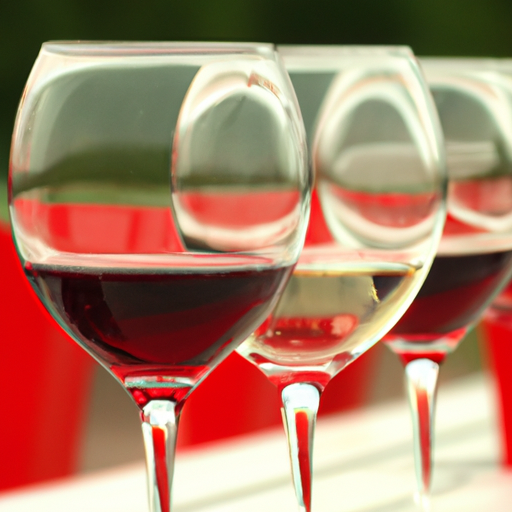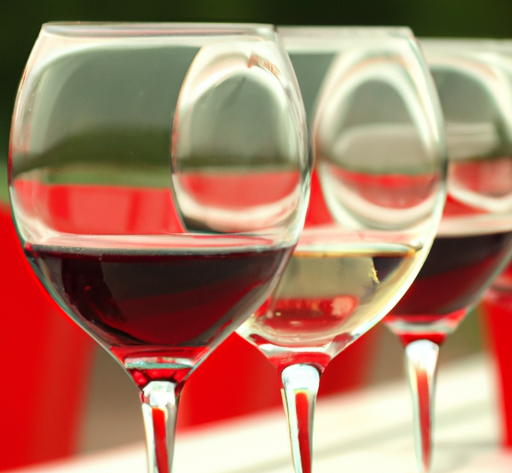Have you ever found yourself at a fancy dinner or a wine tasting event, feeling completely clueless about how to properly drink wine? Don’t worry, you’re not alone! Many people feel intimidated when it comes to navigating the world of wine, but fear not, because I’m here to help you become a wine connoisseur. In this article, you’ll learn all the tips and tricks on how to drink wine like a pro, so you can confidently swirl, sniff, and sip your way through any wine experience.
Let’s dive in and demystify the art of wine drinking. In this article, you’ll discover the importance of using the right glassware, how to properly hold a wine glass, and the significance of swirling the wine before taking a sip. We’ll also explore the basics of wine tasting, including how to assess its appearance, aroma, and taste. By the end of this article, you’ll have all the knowledge you need to impress your friends and family with your newfound wine expertise. So, grab a glass, sit back, and get ready to elevate your wine-drinking experience!

How to Drink Wine Like a Pro
Are you ready to dive into the world of wine but feel overwhelmed by the vast selections and terminology? Fear not! This article will guide you through the basics of understanding wine, from different types and tasting techniques to the art of wine pairing. By the end, you’ll be equipped with the knowledge and confidence to sip and savor wine like a true connoisseur.
Different Types of Wine
To start your wine journey, it’s essential to familiarize yourself with the different types of wine available. From rich reds to crisp whites and festive sparkling wines, the options seem endless. Red wines are usually made from dark-colored grape varieties, such as Cabernet Sauvignon, Merlot, and Pinot Noir. White wines, on the other hand, are made from grapes such as Chardonnay, Sauvignon Blanc, and Riesling. Sparkling wines, like Champagne or Prosecco, have carbonation and are often associated with celebrations.
Wine Tasting Techniques
Now that you know the different types of wine, let’s delve into the art of wine tasting. This process involves more than just sipping and swallowing; it involves a sensory experience that engages your sight, smell, and taste. Start by examining the wine’s color and clarity. Swirl the glass gently to release the wine’s aromas, then take a moment to inhale deeply. Finally, take a small sip, allowing the wine to coat your palate, and observe its flavors and structure.
The Art of Wine Pairing
They say that wine is best enjoyed with good food, and mastering the art of wine pairing can elevate your dining experience to new heights. Understanding flavor profiles is key to successful pairings. For example, light-bodied white wines pair well with delicate dishes like seafood or salads, while bold red wines complement rich meats such as steak or lamb. Don’t be afraid to experiment with unconventional pairings; sometimes, the most unexpected combinations can create harmonious flavor explosions.
Choosing the Right Wine
When faced with a vast selection of wines, it can be challenging to know where to begin. Understanding wine labels is crucial to selecting the right bottle for your preferences. Labels often provide information about the grape variety, winery, region, and vintage. These details can give you insights into the characteristics and quality of the wine. Additionally, exploring different regions and varieties can expand your palate and introduce you to new and exciting flavors.
Proper Storage and Serving
Proper storage and serving play a significant role in maximizing the enjoyment of your wine. Temperature and humidity considerations are essential to ensure that your wine stays in optimal condition. Red wines are typically served between 60 and 65 degrees Fahrenheit, while white wines are best enjoyed slightly chilled, between 45 and 50 degrees Fahrenheit. Decanting and aerating certain wines can help open up their flavors, while using the right wine glasses and accessories can enhance the tasting experience.
Mastering Wine Tasting
To truly appreciate the nuances of wine, it’s essential to master the art of wine tasting. The first step is a visual examination of the wine, taking note of its color, clarity, and viscosity. The next step involves using your nose to identify the wine’s aromas, such as fruit, floral, or earthy notes. Finally, take a sip and pay attention to your palate’s reaction. Notice the wine’s acidity, tannins, and overall balance. With practice, you’ll become more adept at discerning the complexities of different wines.
Exploring Wine Pairing
Once you’ve developed a deeper understanding of wine tasting, it’s time to delve further into the world of wine pairing. Understanding flavor profiles is key to creating harmonious combinations. For example, a fruity and acidic white wine may pair well with citrus-based dishes, while a full-bodied red wine can enhance the flavors of grilled meats. However, don’t be afraid to think outside the box and experiment with unconventional pairings. Sometimes, the most unexpected combinations can create delightful surprises.
Wine Etiquette and Terminology
As you immerse yourself in the world of wine, it’s important to familiarize yourself with wine etiquette and terminology. Proper wine opening and pouring techniques, such as removing the foil cleanly and presenting the label to your guests, can make a difference during formal occasions. Additionally, familiarizing yourself with wine terminology and vocabulary will enable you to confidently discuss and appreciate wines with others. Don’t worry if the terminology feels overwhelming at first – with time and practice, it will become second nature.
Regional Wine Tours and Events
For wine enthusiasts looking to deepen their knowledge and experience, regional wine tours and events offer unique opportunities. Exploring famous wine regions allows you to witness firsthand the terroir and craftsmanship that make each wine unique. Attending wine festivals and expos provides a chance to taste a wide variety of wines, learn from experts, and meet fellow wine enthusiasts. Embrace these experiences as chances to expand your wine horizons and continue learning about this timeless beverage.
Building a Wine Collection
For those interested in building a wine collection, careful budgeting and investment in wines can yield fruitful rewards. Starting with a few bottles that align with your preferences and budget is a sensible approach. As you gain experience and knowledge, you can diversify your collection by exploring different regions, vintages, and grape varieties. Effective cellar management, including proper storage and organizing, ensures that your wines age gracefully and are ready to be enjoyed at their peak.
Discovering Wine-Making Processes
To truly immerse yourself in the world of wine, it’s fascinating to learn about the wine-making processes. From vine to bottle, every step contributes to the creation of unique flavors and characteristics. Harvesting and crushing the grapes marks the beginning of the process, followed by fermentation and aging. Fermentation allows grape sugars to transform into alcohol, while aging in barrels or bottles adds complexity and depth to the final product. Bottling and cellaring complete the process, readying the wine for consumption.
Conclusion
Congratulations! You’ve embarked on a journey to drink wine like a pro. Armed with the knowledge gained from understanding wine basics, exploring different types, mastering wine tasting, and appreciating wine pairing, you’re well on your way to becoming a confident wine enthusiast. Remember, the key to expanding your knowledge is to continue exploring, attending wine events, and embracing new experiences. So, raise your glass and toast to a lifetime of wine enjoyment and discovery!
